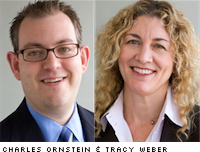 A core goal of nonprofit news organizations is to create impact. Foundations and donors expect evidence of journalism’s impact in a way that the local department store never did. Jack Shafer wrote a scathing critique of the nonprofit-as-impact driver not long ago, arguing that for-profit media is better insulated against donor whims because the audience is the client:
A core goal of nonprofit news organizations is to create impact. Foundations and donors expect evidence of journalism’s impact in a way that the local department store never did. Jack Shafer wrote a scathing critique of the nonprofit-as-impact driver not long ago, arguing that for-profit media is better insulated against donor whims because the audience is the client:
Nonprofit outlets almost always measure their success in terms of influence, not audience, because their customers are the donors who’ve donated cash to influence politics, promote justice, or otherwise build a better world.
(His view of the nonprofit drive to change the world is more jaded than mine. What for-profit newspaper writer got into the business not to change the world?)
Whatever your stance, the reality is here: Maximizing impact is a key part of nonprofits’ aims. Outlets like the Center for Public Integrity, The American Independent News Network (where I edited The Washington Independent), ProPublica, and others measure the reach and impact of their work to drum up support. They do this a number of ways. Center for Public Integrity published its work under a Creative Commons license to try to get other publications to reprint it and amplify the message. (They also participate in a young, and struggling, AP-nonprofit distribution program.) The Washington Independent tracks both media pickup and how its work resulted in real change. ProPublica partners with newspapers around the country in printing its stories — all of which is aimed at maximizing their journalism’s impact.
Today ProPublica is unveiling a new approach in increasing impact: a step-by-step reporting guide that shows how its reporters executed a major investigation, with the hopes that state-based reporters and interested citizen journalists will continue their work.
 Reporters Charles Ornstein and Tracy Weber have created a guide that reverse-engineers how they reported a year-and-a-half-long investigation on how states handle disciplinary action against nurses. The results of their work were alarming, and its consequences were swift: One day after the Los Angeles Times ran a story on how it took years for the state nursing board to take disciplinary action, while allowing dangerous nurses to keep working, Gov. Arnold Schwarzenegger removed most members of the state nursing board. Newspapers in several other states have picked up on ProPublica’s work and run their own versions.
Reporters Charles Ornstein and Tracy Weber have created a guide that reverse-engineers how they reported a year-and-a-half-long investigation on how states handle disciplinary action against nurses. The results of their work were alarming, and its consequences were swift: One day after the Los Angeles Times ran a story on how it took years for the state nursing board to take disciplinary action, while allowing dangerous nurses to keep working, Gov. Arnold Schwarzenegger removed most members of the state nursing board. Newspapers in several other states have picked up on ProPublica’s work and run their own versions.
It took Ornstein and Weber over a year to research their series, but by making the state-based data available and building a guide on how to do the reporting, they say it should be much simpler and less time-consuming for another reporter to follow in their footsteps. The data alone should at least help “find the smoke” in federal reporting-requirement lapses quickly, so a reporter knows where to invest her time, Weber said. They’re both eager to talk to interested reporters, too. (You can contact them directly, or join in on a conference call that will be scheduled soon.)
“When you called all these different states, you realized you were talking to folks who had never talked to journalists before,” Weber told me. “It made me think it was so ripe for local reporters to take a look at this because, frankly, everyone is touched by a nurse.” The guide lays out seven broad steps for reporting out a regulatory board story, with details under each section, including relevant federal law. It also includes relevant links for certain states.
She added the guide’s methods could be applied to any regulatory board, not just those that govern nurses. “This gives them a map to say, ‘Okay, let’s go take a look at this’…They could maybe change the way these boards are overseen in their state if they find, for instance, they never disciplined anyone, which we found, and that just seems impossible.”
Ornstein told me he hopes this experiment, specifically pointing to the online database of disclosure data, creates real change — and impact. “If somebody has to pay $20 to get a copy of a disciplinary order against a nurse, if they’re looking for a home health nurse, is that something they’re really going to do? Is the state really helping them make a smart choice to protect them? I don’t think so. By pointing this out, we’re really doing a service.”